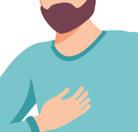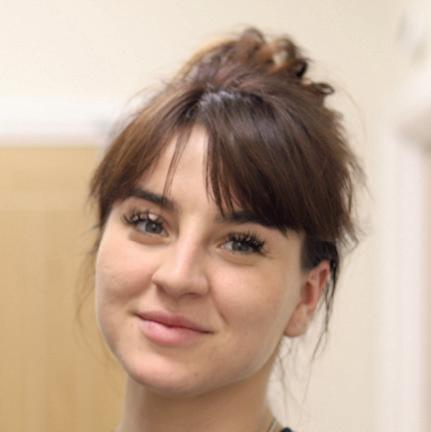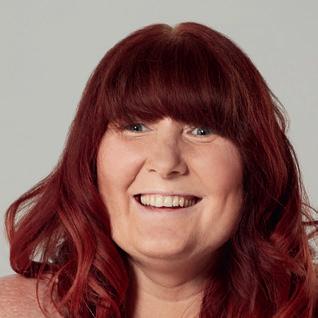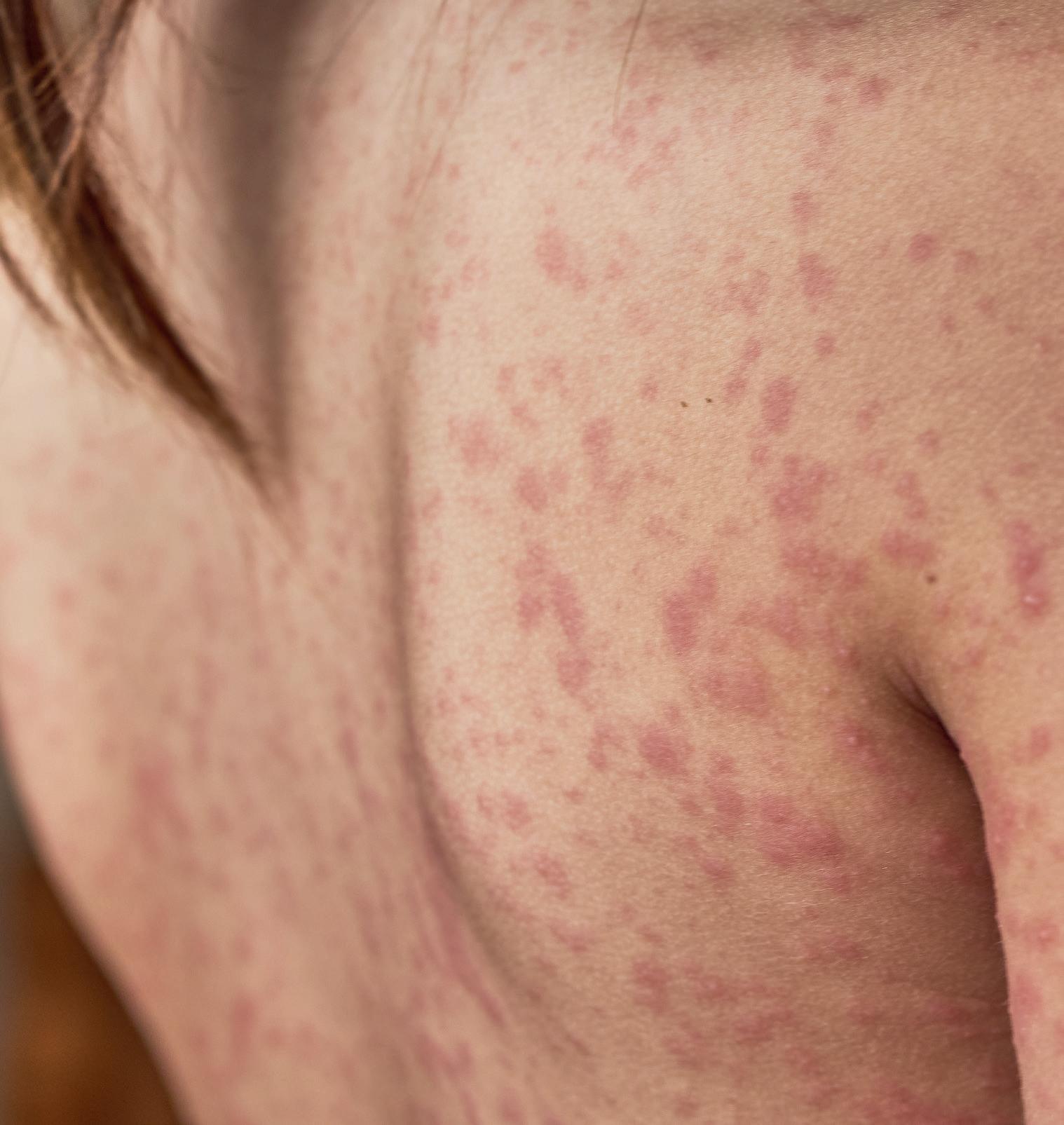“Skin


“Skin




“In
 Susanna Daniels, CEO, Melanoma Focus
Susanna Daniels, CEO, Melanoma Focus


Dealing with acne, rosacea or scarring left behind from flare-ups can be a distressing experience, affecting an individual’s appearance and self-esteem.
Pulse Light Clinic understands the impact of common skin conditions and offers effective treatments to address them. Focusing on advanced techniques and combination treatments, the clinic is dedicated to improving the health and appearance of your skin.

Managing the various types of acne



Acne is a common skin condition characterised by clogged pores, inflammation and formation of pimples. The clinic offers non-invasive treatments for active acne — such as Broadband Light (BBL), LED light therapy and LaseMD to reduce inflammation, kill acne-causing bacteria and promote skin healing. “We can start from acne itself. Treatment depends on pigmentation, redness or indented scarring,” says Brierly, Senior Practitioner at Pulse Light Clinic. “Even from the first session, you can see results. We have scanners to look into the dermis (thickest, inner layer of the skin) and suggest, from there, what treatment would be best.”
Acne and rosacea, while distinct, can exhibit similarities, with some individuals experiencing overlapping symptoms. Inflammation associated with both conditions usually results in scarring. Rosacea is a chronic inflammatory condition resulting in facial redness, visible blood vessels and acne-like bumps. This is treated with IPL (Intense Pulse Light therapy or BBL). Additionally, the clinic offers a food intolerance test, which can help identify potential triggers for flare-ups and support effective management of these conditions.
Treating scarring and acne rosacea

“With scarring, for instance, you’re reminded of being a teenager and the emotions you went through having acne,” continues Brierly. However, it’s not just how it looks that could affect people with more severe conditions. “When you have acne rosacea, you have pustules, which are red spots that get quite sore,” she adds.
CO2 Cool Laser and Morpheus8 treatments can reduce acne scarring and inflammation and promote smoother skin. CO2 Cool Laser resurfaces the skin, stimulates collagen production and reduces the appearance of scars, while Morpheus8 remodels scar tissue, improving skin texture. Additionally, PicoSure laser treatment addresses post-inflammatory hyperpigmentation, reducing discolouration commonly associated with acne scars. Pulse Light Clinic has various treatments to target acne and acne scarring and provide relief for individuals with rosacea.
Skin conditions can have a devastating impact on a person’s emotional state, mental health and wider wellbeing. Dermatology patients often report feeling distressed; without proper treatment, this distress can be more acute.




WRITTEN BY Dr Eleanor Chatburn Clinical Psychologist, Self London and British Skin Foundation ambassador
Imagine that you live with a chronic medical condition that is largely out of your control. It is painful or itchy, disrupts your sleep and takes up your time through appointments, applying creams and bandages or taking medications. It alters your appearance, and people may stare or react with fear that the condition is ‘contagious’ — or minimise it as ‘only cosmetic.’ This is the reality of millions of people in the UK with chronic skin conditions.


Skin conditions can make daily life difficult Many people find that their skin condition impacts their personal, sexual and work relationships; social isolation is, sadly, common. People also tend to reduce activities they previously found enjoyable and may drop out of sports. Some people must completely change their diet. These lifestyle changes can impact a person’s physical, psychological and social wellbeing.
Studies have shown that people with skin conditions have a poorer quality of life and a higher risk of developing depression, suicidal ideation, low self-esteem, stress, anxiety and body image problems.

The psychological burden of skin disease seems clear, but fewer people realise that the link between our skin and mental health is bi-directional. The latest biomechanical research suggests that there is a ‘brain-skin


@MediaplanetUK
axis’ through which psychological and environmental stress is translated from the brain to the skin and vice versa.

This explains why stress is a common trigger for inflammatory skin conditions (such as psoriasis, rosacea and eczema). It also explains why, when people become distressed about their skin, their skin condition becomes even worse. Without support, people can get trapped in this stress-flare cycle.















































Patients with a skin disease must be offered psychological support. Thanks to hard campaigning work from charities, dermatologists, researchers and other groups, some positive action has been taken. Specially trained psychologists and psychiatrists work closely with dermatologists to treat the mind and the skin together (an area of practice called ‘psychodermatology’).
Several specialist NHS psychodermatology services are now funded, although provision is still patchy. Psychological interventions, such as cognitive-behavioural therapy, have benefited people with skin conditions. We’ve taken positive steps to support the psychological needs of people with skin conditions. Current projects are exploring the potential benefits of therapy groups or digital self-help interventions. However, there is a way to go.











Please recycle
Project Manager: Lydia Butler lydia.butler@mediaplanet.com Business Development Manager: Josie Mason Managing Director: Alex Williams Head of Business Development: Ellie McGregor | Head of Print & Design: Thomas Kent Designer: Aimee Rayment
Content Editor: Angelica Hackett O’Toole | Head of Digital Operations: Harvey O’Donnell Paid Media Strategist: Jonni Asfaha
Social & Web Editor: Henry Phillips Digital Assistant: Carolina Galbraith Duarte | All images supplied by Gettyimages, unless otherwise specifi ed | Contact information: uk.info@mediaplanet.com or +44 (0) 203 642 0737
Find the right acne treatment for you to gain your confidence backINTERVIEW WITH Cherrie Brierly Senior Practitioner, Pulse Light Clinic WRITTEN BY Angelica Hackett O’Toole

to help with a friend’s keratosis pilaris, known as chicken skin. “This is a dry skin condition where little lumps — sometimes white or circled red — are found on the backs of the arms,” explains Parker. “We made a body lotion for our friend, and the feedback she gave us was phenomenal. So we tried it on a panel of other patients with keratosis pilaris with similar results.”
Dry skin conditions can be common in perimenopause and menopause. “This is due to hormonal changes,” notes Parker. “Women can suddenly be confronted with a skin issue that they have never had to deal with before, which can be extremely disconcerting. Hormonal imbalance can also result in oily skin due to excess sebum production — we see it in teenagers and younger people — so it’s important to find a product that works with the condition you have.” If a skin condition is concerning you, or is debilitating, see your GP or consult your pharmacist.
Debilitating skin conditions can have a damaging impact on confidence and, ultimately, mental health. It’s why finding products to improve skin appearance can be life-changing.

Stacie Warren had suffered from severe dry skin concerns for as long as she can remember. As she entered her early adult life, her skin health deteriorated so much that it started to affect her confidence.

“At the time, I didn’t connect the dots,” she says. “But the way my skin looked was having an impact on my mental health. I was so embarrassed that I wouldn’t even leave the house if I could help it, so I struggled to meet people and make new friends. It was even hard for me to go out with the friends I already had. If I did go out, I had to cover up completely — I’d never wear skirts or short-sleeved tops. I couldn’t be myself, and I didn’t feel confident in my skin.”
Trial and error finding the right skincare Thankfully, things have changed for the better. Warren is now National Education Manager for skincare brand Ameliorate, which makes a range of products designed to help dry and oily skin, accredited by the British Skin Foundation.
“I found and began using these
products before I started working for the company,” she says. “To anyone with a skin condition that’s affecting their physical and mental wellbeing: keep looking for the right products for you. It might be trial and error at first, but when you find something that helps your skin or improves its appearance, it’s life-changing.”
Poor general wellbeing may affect skin health
While there’s no doubt that skin conditions can affect our mental wellbeing, can poor mental wellbeing impact the health of our skin? “We know that mental health can impact other facets of our lives such as stress and diet,” says Robin Parker, R&D Director at THG Labs (Acheson), the product development partner behind Ameliorate.

“While there is no direct link between poor mental health and the health of our skin, everything is bound together. So, when things go wrong or are out of balance with our general wellbeing, it’s likely that our skin could be affected.”
Parker first formulated Ameliorate
For Warren, clear skin means that social situations are no longer a problem, and skirts and short-sleeved tops are back in style. “My skin and mental wellbeing are the healthiest they’ve ever been,” she says. “There are things you can do if a skin condition is affecting your confidence. Talk to a doctor, but also do your own research. Find out about your skin type, and look for products with ingredients that will help your skin. It may take a while, but the results can be transformational.”
Using data-driven processes is proving successful in customising skincare for people suffering from skin conditions.
Finding the right skincare routine for those suffering from skin conditions — such as acne, sensitive skin, and eczema — has been challenging. However, AI has been harnessed by a forward-thinking Danish company that has carried out extensive scientific research to reverse-engineer the development of precision products — customised to the individual.
Data-driven skincare formulations
The company, NØIE, uses in-depth surveys to categorise each person, based on their unique biomarkers, to recommend them a personalised skincare routine with the highest probability of benefitting their skin. With machine learning, all data is used to cluster people and capture information about what their skin looks like and how they respond to the products.
Christian Riemer, Head of R&D and Pharmacovigilance, who is a molecular biologist, says: “With the help of AI, we constantly gather feedback on the effectiveness of the formulations. The strength of this approach lies in continuously building upon prior learnings and increasing user stratification. As a result, we’re able to improve our recommendations and personalise our product development even more over time.”

Relying on all feedback for improvement

Riemer adds: “Ironically, we place
Melanoma skin cancer rates have been rising faster than other common cancers. However, 90% of melanoma cases can be prevented by staying safe from the sun.
great emphasis on negative feedback, since it clearly indicates unmet needs and for whom, and it highlights the importance of future development. It’s all completely data-driven, and our future success rate depends on the amount of data we obtain and the evaluation from the end users. It is quite distinct from anything else on the market — almost Darwinistic improvement of the products.”
Reformulating until it works Customer feedback now shows that 86% are reporting a positive effect. NØIE will only recommend the specific product(s) that work best for an individual. For those who don’t experience a positive response, the company offers to reformulate the routine free of charge. It stems from the belief that people should not pay for something that doesn’t work. Besides utilising the data for internal optimisation, Riemer and the team are also engaging with external un-affiliated researchers: “The aim is to close the gap between healthcare practitioners and patients in all aspects of dealing with a skin condition and thereby help people live the full potential of their lives,” concludes Riemer.
Recently, NØIE completed a clinical study, amongst others, to investigate the link between skin disease severity and the impact on an individual’s life — both from the practitioner’s and the patient’s point of view.
Reference NHS. (2022, December 19). Sunscreen and sun safety. NHS choices. https://www.nhs.uk/ live-well/seasonal-health/ sunscreen-and-sunsafety/

Skin cancer prevention is not exclusive to one gender, ethnicity or age group — we must all look after our skin. In the UK, summer begins in March and ends in October. The highest UV exposure occurs between 11 am and 3 pm, especially on hot, sunny days. However, even on cloudy days, UV exposure exists, so sun safety practices should still be followed. To practice sun safety, three concepts should be considered: clothing, shade and application of sun protection.
Sun protection with clothes and shade
When considering clothing, think of areas that are going to be exposed and keep them covered, especially in children. There are UV-specific garments that can be purchased. However, they can be costly, so the use of lightweight cotton or linen can be just as helpful.
The use of a wide-brimmed hat and sunglasses with UV 400 protection are also beneficial in protecting our face, ears and eyes. Avoiding prolonged periods of UV exposure during peak hours is just as important as clothing and
From common conditions to potential killers, we work to understand skin disease inside out .
disease
treated with the lowest effective dose. While the drug has potential side effects (including nausea), hair loss should not be one of them — although hair thinning may occur in a small number of patients.
Another misconception is that methotrexate causes liver damage. “In rare cases, it can affect liver function and cause hepatitis, which is inflammation of the liver, or fibrosis, which is scarring of the liver,” says Dr King. “We monitor patients very closely so that the drug can be administered safely, usually with clinic follow-up, regular blood tests and sometimes a scan of the liver called a fibroscan. If we have any concerns, we might decrease the dose, stop prescribing it or seek advice from a hepatology specialist.” Patients taking methotrexate do not have to give up alcohol entirely (another misconception); although, they are advised against drinking excessive amounts and should certainly keep within the UK chief medical officer’s guidance, which includes not drinking more than 14 units of alcohol per week.
Contrary to some opinions voiced on the internet, methotrexate is not a drug that has to be taken for life. It’s not a cure for a skin condition either.
“Patients can stop taking methotrexate and not experience any further issues,” says Dr King. “But, in most instances, it is regarded as a long-term treatment.”
Patients with infl ammatory skin conditions may be prescribed a long-term treatment called methotrexate. A consultant dermatologist busts some myths surrounding the drug.
If you have an inflammatory skin condition such as psoriasis or eczema, you may be prescribed a drug called methotrexate. It is long-established but sometimes misunderstood, notes Dr Tom King, Consultant Dermatologist at Sheffield Teaching Hospitals.
“Methotrexate works as an immunosuppressant medication and has been widely prescribed by dermatologists since the 1960s to improve some inflammatory skin conditions — and with notable success,” he says. “For example, it can be extremely effective in the treatment of psoriasis, with 37%–40% of patients reporting a 75% improvement in their condition.”
Skin disorders that methotrexate can be used to treat include eczema, cutaneous lupus, cutaneous sarcoidosis, blistering disorders and cutaneous lymphoma. Although psoriasis is the only licensed indication in dermatology, its use in many other conditions is supported in national guidelines. It’s taken once



a week as a tablet, liquid or injection; and treatment success depends on the type and severity of the patient’s condition.
Tackling myths and misconceptions surrounding methotrexate


Several misconceptions have developed around methotrexate — and amplified by social media. Chief among them is that methotrexate is chemotherapy.
“A relative of methotrexate, known as aminopterin, was first used as long ago as 1948 to treat leukemia,” says Dr King. “And methotrexate has been, and still is, used in chemotherapy. For example, dermatologists sometimes use it to treat cutaneous lymphoma, which is cancer. But with psoriasis and eczema, etc., we use it differently: our aim is to suppress the inflammatory process in the body that causes these skin conditions.”
Plus, with chemotherapy, a patient might receive very high doses of methotrexate; whereas most noncancerous skin conditions can be
Carefully weighing the risks and benefits of medication
The final myth is that female patients being treated with methotrexate cannot have children. “It does not affect long-term fertility,” explains Dr King. “However, it can cause foetal abnormalities, so it’s recommended that women taking the drug should be mindful of contraception and ideally use two effective forms of birth control while on the medication. Guidelines say that after three months of stopping methotrexate, it is then safe to conceive.” Males taking methotrexate should also use an effective form of contraception.
Don’t take your medical advice from the internet, says Dr King. See a doctor who will answer any concerns you may have surrounding a prescribed medication. “It’s our job to educate patients with scientific fact so that they can make an informed decision,” says Dr King. “Before prescribing any treatment, we will always carefully weigh its risks and benefits.”
It’s our job to educate patients with scientific fact so that they can make an informed decision.
Skin cancer is the world’s most common cancer. As cases continue to rise at epidemic proportions, we must take charge of our skin health and surveillance.
In support of National Skin Cancer Awareness Month, skin cancer charity SKCIN explains the important role of the UV index and sun protection in preventing skin cancer.

How prevalent is skin cancer in the UK?
About one in four men and one in five women will be diagnosed with nonmelanoma skin cancer. Over 210,000 cases of non-melanoma skin cancers are diagnosed annually in the UK with cases expected to reach 400,000 annually by 2025.
Approximately 1 in 36 men and 1 in 47 women will be diagnosed with melanoma during their lifetime, and it is one of the biggest killing cancers in the 15–34 age group. However, the good news is that around 90% of all cases are preventable. Moreover, it is the only cancer type we can physically see developing in its early stages, so with education, we can reverse these statistics and save many lives.

What causes skin cancer?
Around 90% of all skin cancers are caused by overexposure to UV radiation from the sun and/or sun beds. Sunburn, reddening, peeling and even tanning of the skin, are clear indications of sun damage. While many people associate a tan with looking healthy, it is actually a sign

Melanoma is the most serious form of skin cancer. It occurs when melanocytes — the cells in the skin that produce pigment — grow abnormally and out of control.
In the UK, 1 in 36 men and 1 in 47 women will be diagnosed with melanoma in their lifetime. The most common areas affected in women are the legs, while in men, it is usually the back.
About 86% of melanomas are preventable
Fortunately, melanoma is largely preventable. Sun and sunbed exposure, as well as a skin type that burns easily, are the main risk factors. It is estimated that about 9 in 10 cases can be avoided by being smart about sun safety.
that our skin has been harmed by UV radiation and is trying to defend itself against further damage.
Without sun protection, UV radiation starts to penetrate deep into the layers of the skin, causing damage to the DNA in our skin cells. Damage from UV is cumulative and irreparable. Therefore, once the tan fades, the damage remains, which can lead to the development of all types of skin cancer.
How should we protect our skin from UV radiation?
Around 90% of skin cancers can be avoided by adopting simple sun-safe strategies. Simply check the daily UV index; and when UV levels reach 3 or above, use sun protection.
Protect your skin by following Skcin’s ‘Five S’ approach to sun safety: (1) Slip on clothing; (2) Slop on sunscreen; (3) Slap on a sun hat; (4) Slide on sunglasses; (5) Shade from the sun.
Early diagnosis of skin cancer can save lives. Everyone should keep track of their skin health and use sun protection. Skin cancer affects all skin types, which is why we must help each other make better decisions for our skin.
For more information on melanoma and how to check your skin, visit melanomafocus. org/aboutmelanoma/skincheck-leaflet/

For more information on diagnosis, treatment and wellbeing support, see the Melanoma Stages and Treatment - Patient Guide melanomafocus. org/melanomapatienttreatment-guide/ Alternatively, you can call the Melanoma Focus Helpline on 0808 801 0777

Early detection and common indications
Early detection is key to successfully treating melanoma. The most common signs to look out for are a mole or lesion that is:
• Changed (such as a change in shape colour, bleeding or itching): It is new or seems to have changed since you last saw it (don’t look for detail; you can see it has changed just by glancing at the lesion, that’s enough).
• Not going away: Once a new lesion has appeared, it remains on the skin for longer than 6–8 weeks.
• Odd (the most crucial test): It simply looks strange, worries you or seems to be different from other lesions on your skin.
To help detect any changes in your moles, get into the habit of checking your skin once a month. You may need a mirror or someone to help you check hard-to-see areas such as your scalp, back, between your fingers and toes and under the arms. Take photos to help you monitor.
Contact your GP
If you have any concerns, contact your GP. They may ask you to send a picture via a secure messaging system for a specialist dermatologist to review. They may use a dermatoscope — a type of magnifying tool to view the deeper layers of the skin.
Treatment options for melanoma
If caught at an early stage, when you may feel completely well and have no other symptoms, it is treated through surgery, and the cure rate is very high. This is done under a local anaesthetic, so you shouldn’t feel any pain. In many cases, it won’t be a melanoma, but it is important to get checked as there are more treatments if caught early. If the melanoma has spread, there are more modern treatment options, such as immunotherapy and targeted therapies.
Radiotherapy can lead to radiation-induced skin reactions, regardless of skin colour. This is why it’s important to find the right skincare for radiotherapy.

Radiotherapy is a treatment that uses radiation to kill cancer cells. Approximately 60% of cancer patients will have radiotherapy at some point within their treatment pathway, and about 95% of them will have some form of skin change.
Beliefs and inclusive radiotherapy skincare
Naman Julka-Anderson Therapeutic Radiographer, Allied Healthcare Professional, Clinical Advisor for Macmillan Cancer Support and Rad Chat Oncology Podcast Co-Host WRITTEN BY Angelica Hackett O’Toole
WRITTEN BY Angelica Hackett O’Toole
Skin changes are called radiation-induced skin reactions or radiation dermatitis. It is caused by high doses of radiation and may include pigmentation, itching, blistering or dry, peeling skin. However, many assumptions and suggestions around these skin changes — and skincare in general — are based on White skin. “People with Brown or Black skin haven’t really been considered,” says Naman Julka-Anderson, a radiographer awarded London and UK radiographer of the year by the Society of Radiographers.
He cites the example of considering all skin types in consent forms. “People with Black skin, they’ve consented on forms signed by doctors, which tell them to look out for redness. In pigmented or Black skin, you’re rarely going to see redness. So, from an ethical perspective, they’ve been given the wrong information.”
For people with White skin tones, their skin can start to look more red from a reaction, whereas people with Brown and Black skin might see subtle darkening or changes in the colour spectrum within the treatment area.
People undergoing radiotherapy for treatment of skin cancers, breast, head and neck and gynaecological cancers, can get more severe skin reactions. Anyone can experience inflammation and irritation. “It’s not like a burn, which leaves scars. Though, some might describe it as such. The skin will go back to normal, and we rarely see scars from radiation damage.” However, some people may have worse reactions than others. A radiationinduced skin reaction is unavoidable but depends on radiation dose and treatment schedules.
Another factor not often considered is how it can affect patient wellbeing. “As they develop more of a skin reaction, more people will see it. I had a patient whose skin was sore post-treatment, and she wasn’t able to attend her daughter’s wedding because she couldn’t get her dress on — it was too painful,” says Naman.
Skin damage can be minimised, however assessing the skin nice and early and ensuring patients have some form of topical cream is an important part of that, insists Naman. The key is to keep the skin hydrated and the treatment area clean. “I always advise patients to try and get their skin ready, maybe a week or two before treatment.”
Research from the Society of Radiographers in 2020 highlights the importance of finding skincare that works for you — and continue using that. “There are a number of companies with good products. Dressings and making sure not to wear tight clothing can also help. There are soothing creams, and other similar products, that can minimise damage effectively,” he says.
Radiaderm offers clinically proven skincare to support people undergoing radiotherapy. It can be used during and after radiotherapy, with 60% of patients from hospital-based clinical studies reporting they displayed no evidence of an adverse skin reaction during radiotherapy treatment.
Chris Curtis, CEO, The Swallows Head and Neck Cancer Support Group, says: “It is crucial that patients can get access to products that help them through the treatment pathway and into survivorship. We have seen that Radiaderm helps patients going through radiotherapy and highly recommend this to our patients.”
The Society of Radiographers offer patient leaflets with valuable advice on radiation dermatitis, and it’s free for anyone. The resources are co-produced with people who had a cancer diagnosis. “It’s important not to hesitate to ask your therapeutic radiographers for help. We know it can be uncomfortable; there’s no point suffering in silence. Even if you notice the smallest change overnight, just speak to us.”
For more information, visit radiaderm.com

People undergoing radiotherapy for treatment of skin cancers, breast, head and neck and gynaecological cancers, can get more severe skin reactions.
Protecting a baby’s delicate skin may require a ‘less is more attitude’ if they are to develop a healthy microbiome that will help ward off harmful bacteria.
The overriding urge to protect a newborn baby is a feeling parents are immersed in straight away; but aside from the obvious dangers, some threats might not be immediately apparent.
Maintain the diversity and balance of baby skin
ensure an infant’s skin is cared for in the right way.
“For the establishment of a healthy skin microbiome, you don’t want to interfere by overloading it with products. You want to let it develop naturally with the same bacteria in its natural environment to create a healthy balance and diversity of microbes.
Dr Emer Gilligan Director, WaterWipesLittle ones are most precious and delicate, especially in their first year, and one area that parents may not have considered is the importance of their child developing a healthy skin microbiome.
This is the set of microorganisms including bacteria, viruses, and fungi, that live on the skin. When a baby is born, their skin microbiome begins to develop and there is an even distribution of microbes on the baby’s body. As we grow older, however, the skin microbiome diversifies, and differences can be found at specific sites on the body. It is known that excessive hygiene and the use of harsh chemicals and ingredients can disrupt the healthy balance of the skin microbiome.
Caring for your baby’s skin
Dr Emer Gilligan, External Affairs Director of the Ireland-based manufacturer WaterWipes®, is responsible for leading a multi-disciplinary team including product safety and regulatory compliance. She insists that it’s important to

“An impaired skin barrier function and microbial imbalance has been shown to be involved in skin infections and certain skin conditions, such as eczema and nappy rash, so it’s important to care for the skin in such a way as to maintain a healthy balance.”
Think fewer ingredients and simpler routines
WaterWipes® contain only two ingredients, 99.9% water and a drop of fruit extract — a gentle skin conditioning agent. The wipes are ideal for sensitive, newborn, and premature baby skin and have been awarded the ‘Microbiome-friendly’ seal of quality by MyMicrobiome and LabSkin’s Microbiome Friendly+ seal of approval.

Parents can help their child’s skin develop their natural skin barrier by not over-using products or excessively cleansing; being mindful of the products they are using by reading the ingredients list; spending time in nature; and ensuring a balanced diet. “Maybe take a ‘less is more attitude’,” Dr Gilligan advises.
Vitiligo is an incurable skin condition that affects 1–2% of the world’s population and can psychologically impact a person’s life.
According to the British Skin Foundation, 60% of people in the UK currently have a skin condition, and 70% of British people with a skin condition or scar say it affects their confidence.
What is vitiligo?
Vitiligo is an autoimmune condition where white patches form on the skin due to a loss of pigment. This happens when melanocytes, the skin cells that make pigment, are attacked and destroyed.
The highly visible condition can affect both males and females of any skin colour, however, it is more noticeable on those with darker
skin. Most patients will develop the condition by the time they are 30 years old.
There is no known cure for vitiligo, however, there are treatments that may help restore skin colour or slow down the development of patches. Once diagnosed, the first course of treatment often suggested by a GP/ Dermatologist is topical steroids. Other types of treatment include phototherapy (treatment with light), skin grafts and depigmentation.
First-hand experience with vitiligo
I developed vitiligo when I was three
years old. It started as a small spot on the back of my hand, which spread significantly over two years, covering 70% of my body. Being of mixed-race heritage meant the white patches were a stark contrast against what was, once, my natural skin colour.
I lacked confidence and self-esteem and tried to disguise my skin with camouflage makeup and fake tan. I loved sports but felt anxious wearing a PE skirt, and summer felt like the worst time because I couldn’t dress for the warm weather.
My anxiety and lack of confidence as a result of having the condition lasted throughout my teens and 20s. It was only at the age of 30, when I had phototherapy treatment for 13 months, that I was able to start accepting my skin and appreciating that I was different.
How patients can improve their outlook with vitiligo Community is essential to feeling accepted and knowing that you aren’t alone on your vitiligo journey. When I started to connect with others who had vitiligo, I felt a sense of empowerment knowing that others understood how I felt.


The Vitiligo Society, where I am a trustee, has played an important part in developing my personal growth. They have provided me, and so many other people, with the awareness and support needed to feel confident in our skin.
WRITTEN BY Natalie Ambersley Trustee, The Vitiligo SocietyParents can help their child’s skin develop their natural skin barrier by not overusing products or excessively cleansing.WRITTEN BY Sheree Hanna
From insecurity to empowerment: living with vitiligo and the psychological effectsCredit:AdamJones